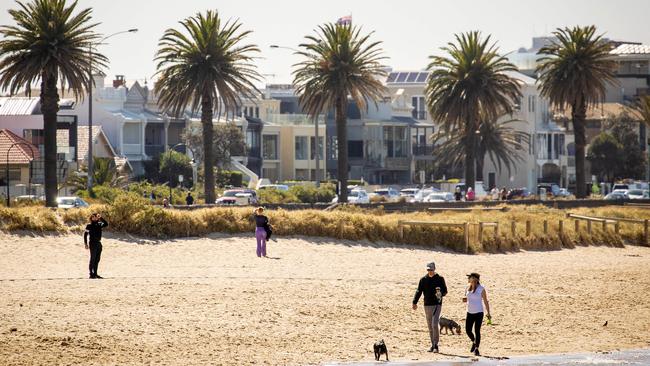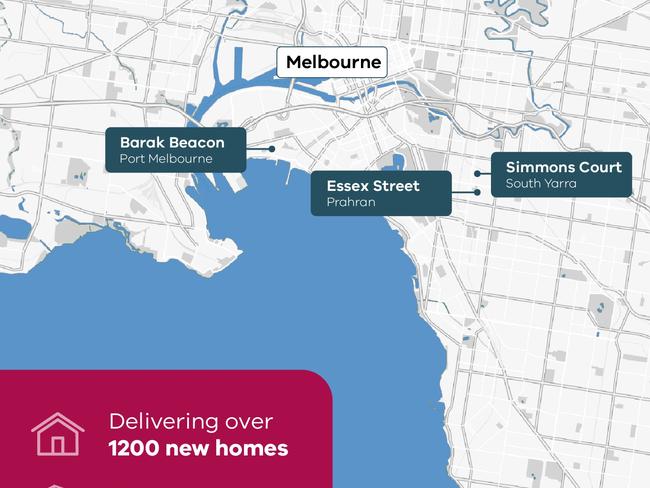Build-to-rent scheme for social housing is set to blitz Melbourne’s ritziest suburbs
A number of Melbourne’s blue-chip suburbs will soon be home to a mix of new private and public rentals under a $500m housing blitz.
Victoria
Don't miss out on the headlines from Victoria. Followed categories will be added to My News.
More than 1400 new homes — including 650 for social housing tenants — will be built in premium inner city and bayside suburbs as part of a $500 million building blitz.
The government-backed scheme, which converts outdated commission flat-era land into a mix of new private and public rentals in blue-chip suburbs, will also create 4500 jobs.
A mix of one, two and three-bedroom homes will be built at four sites in Prahran, Port Melbourne, South Yarra and Hampton East, replacing 502 units.
Under the innovative model, a consortium is leased the land for 40 years to build,
finance, operate and maintain a mix of social, affordable and market rentals.
After 40 years ownership reverts to government, while lease “profits” — made once borrowing costs are reduced — are shared between community groups and taxpayers and reinvested in more stock.

Housing Minister Richard Wynne said the homes would be built “where Victorians need it most” and would “revitalise” those areas.
“We are giving Victorians who need it most a brand new home, replacing 502 outdated houses and breathing new life into these communities,” he said.
“This project is the second under a ‘ground lease’ model, an innovative way of delivering social housing that will not only build affordable homes – it will also create thousands of jobs.”

The project is set to commence in 2023 and tenants move in by 2025.
It is the second tranche of the Australian-first program, with the first homes to be built in Brighton, Prahran and Flemington next year.
That first stage was kickstarted with $50m upfront from taxpayers and $75m from Community Housing Limited, with the rest of the approximately $500m build borrowed by the consortium led by CHL and paid back through rent and public subsidies.
In total about 12,000 homes are expected to be built over four years, stimulating the post-pandemic economy while reducing massive public housing waiting lists.
Social, affordable, and market rental homes — including some Specialist
Disability Accommodation — are included at each site.
Mr Wynne said the properties would be energy efficient and environmentally sustainable,
and the developments have committed to large communal green spaces.





